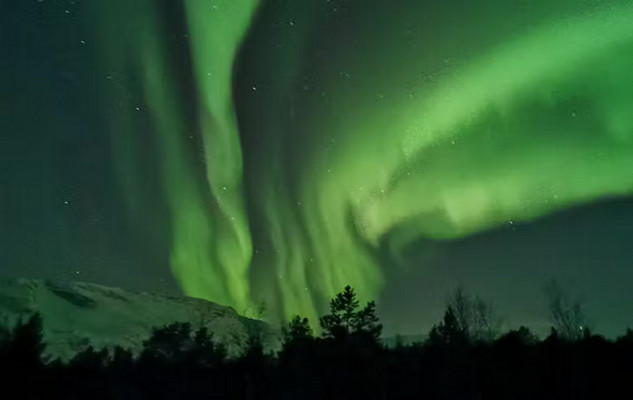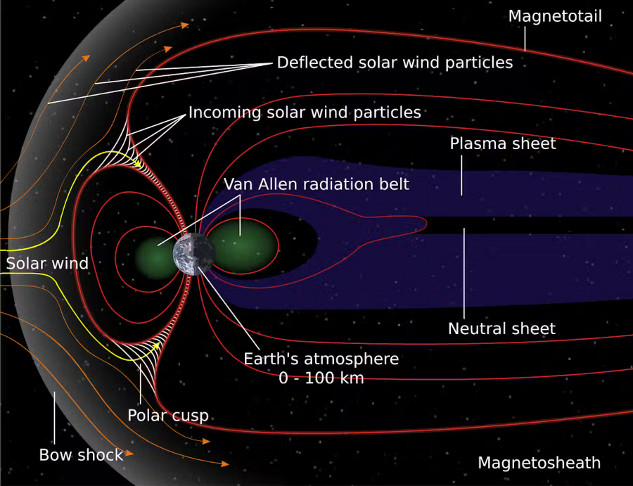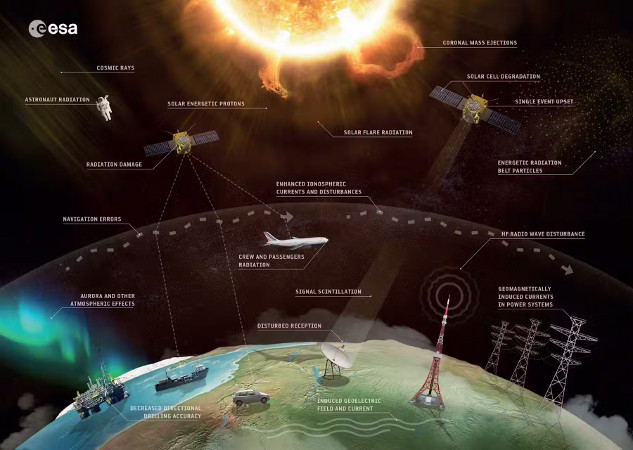
The aurora borealis is just one of the effects of space weather on Earth. Photograph of the aurora taken in 2021 at Skibotn (Norway). Provided by author.
In this Article:
- What are solar storms?
- Can we predict solar storms?
- Historical impacts of solar storms
- How solar storms affect technology and power grids
- What measures can be taken to mitigate solar storm effects?

How Solar Storms Impact Our Lives
by Elisa Robert and Mathieu Barthélemy, Université Grenoble Alpes (UGA)
Despite the 150 million kilometres that separate it from the Earth, the Sun does more than just light our way: it also impacts our electricity networks, and even our transport.
The scientific discipline tasked with studying its complex interactions with the Earth is called “space weather”. Its aim is to understand, quantify and, if possible, predict the effect of the Sun on our space and terrestrial infrastructures. So, what are these risks? How can the Sun affect our human activities? And above all, how can we anticipate and protect ourselves against it?
Wild telegraphy
It all goes back what is known in space weather as the Carrington Event. In 1859, auroras were observed at very low latitudes (as far south as Cuba), whereas these phenomena are normally located in the polar regions. However little technology the 19th century disposed of, contemporary telegraphs were numerous enough to bear witness to extraordinary disturbances. The signalling systems continued to send information even though they were powered down. Scientists dubbed this phenomenon “celestial batteries”, because it was the electric fields generated by the aurora that powered the circuits.
Other historic events are also worth mentioning, such as the one in 1989, when Quebec found itself without electricity for several hours, or the Halloween storm of 2003, when the town of Malmö in southern Sweden suffered the same consequences. The root cause is always the same: solar storms and their interaction with planet Earth.
How does the Sun interact with the Earth?
The Sun constantly sends us electromagnetic radiation, but also particles known as the solar wind. These particles are mainly electrons and protons. When large solar flares occur, large quantities of plasma (made up of charged particles) are ejected: these are known as coronal mass ejections. When these are emitted toward the Earth, they first encounter the Earth’s magnetic field, which acts like a shield to protect us from these particles. However, these particles sometimes manage to penetrate this protective barrier and interact with our upper atmosphere. This is what is known as a geomagnetic storm.
It is this meeting of charged particles with the molecules and atoms of the upper atmosphere (such as oxygen and nitrogen) that gives rise to the luminous phenomenon of the polar aurorae. These aurorae are therefore visible evidence to the naked eye that this Sun-Earth interaction does indeed exist.

The solar wind always sweeps over the Earth, protected by its magnetic field. But during solar storms, particles carried by the solar wind can penetrate this field at the poles and interact with the upper atmosphere, creating the polar aurora. NASA, Aaron Kaase, Medium69/Wikimedia, CC BY
The major difficulty facing scientists today is that these coronal mass ejections are difficult to predict. It is therefore difficult to know when they will occur and whether or not they will have an impact on the Earth. We do know, however, that the Sun’s activity follows a cycle of around 11 years, with a peak in activity in the middle of the cycle. It is during this period of maximum activity that we see the most solar flares. In fact, we are currently experiencing the peak of activity in the current solar cycle, which is expected to peak in 2025.
Beyond this cycle, the presence of “active” regions is a marker of the greater or lesser likelihood of the Sun emitting such a flow of particles. They are called sunspots because in visible light they appear darker than the rest of the solar disc. A sunspot also has to be in front of the Earth for the particles it emits to reach our planet.
Solar maximum and observations of the aurora borealis at low latitudes: a reminder of recent events. On 10 May 2024, we were able to observe the aurora borealis as far away as France. And it was indeed several coronal mass ejections emitted in the direction of the Earth that were responsible for these auroras.
In concrete terms, what are the effects on Earth?
There are several. Many sectors of activity are affected and systems are affected in different ways. The first example is power grids, which are affected by what are known as geomagnetically induced currents, created by geomagnetic storms. These currents are added to those already present in the conductors, leading to disruption and sometimes even blackout of the networks.
But it’s not just electricity grids that are affected, pipelines and rail networks are too. Another example is aviation. This sector can be impacted by high-energy particles sent out by the Sun during coronal mass ejections. These particles can directly penetrate aircraft systems and cause temporary or permanent damage. These same particles can irradiate passengers and crew in the event of a major geomagnetic event.
Another example that can be given here concerns everyday devices. Mobile phones, connected watches, our cars and many others all use satellite positioning systems (such as GPS or its European equivalent Galileo) to locate themselves. These systems can be disrupted by geomagnetic storms, resulting in accuracy errors and position shifts ranging from a few metres to several hundred metres, which can be very problematic.
Radiation emitted by the Sun during periods of high activity can have many consequences for our terrestrial systems. ESA/Science Office, CC BY-SA
Similarly, satellite and high-frequency communications are also affected by geomagnetic storms, but also by bursts of solar radiation. As a result, sectors such as shipping, the military and finance are also disrupted by these events.
Adapting our societies to better prevent solar storms
These various disruptions can have serious economic and social consequences, with cascading reactions given that all our systems are interconnected. As a result, if one electricity network goes down, so do all the systems that depend on it, with direct consequences not only for infrastructure but also for our daily lives. This raises a number of questions: are we aware of this risk? How would we react if our technological devices stopped working for several hours or several days, or worse, if a region was deprived of electricity for a long period?
All these questions are crucial, and are taken seriously by the space weather community, but also by governments, who are developing solutions to prevent these risks and minimise the damage. It was this prevention and the accurate prediction of NOAA, the US agency responsible for observing the atmosphere and oceans, that enabled operators to limit the damage during the event on 10 May 2024. However, while the damage was limited on this occasion, the consequences may be different if the next solar flare is more severe or unforeseeable by scientists. This would leave operators no time to put safety measures in place, resulting in damage that would certainly be far more extensive.
All these issues are currently being closely analysed in a study funded by Axa insurance. The aim is to make the insurance sector and the rest of society more aware of these space weather risks, so as to understand them better, predict them better, quantify their consequences and minimise them. So, in the same way that we watch the weather forecast to find out what the weather will be like, scientists are consulting specialised bulletins and applications to find out about forthcoming solar storms. Perhaps soon we’ll all have solar storm alerts on our phones.![]()

Elisa Robert, Doctor in space meteorology, Université Grenoble Alpes (UGA) and Mathieu Barthélemy, Professor, deputy director of CSUG, scientific director of MPLS in Alpes Dauphiné, Université Grenoble Alpes (UGA)
Article Recap:
Solar storms, caused by solar flares and coronal mass ejections, can significantly impact technology and power grids. This article explores these effects and discusses measures to predict and mitigate them.
This article is republished from The Conversation under a Creative Commons license. Read the original article.
























